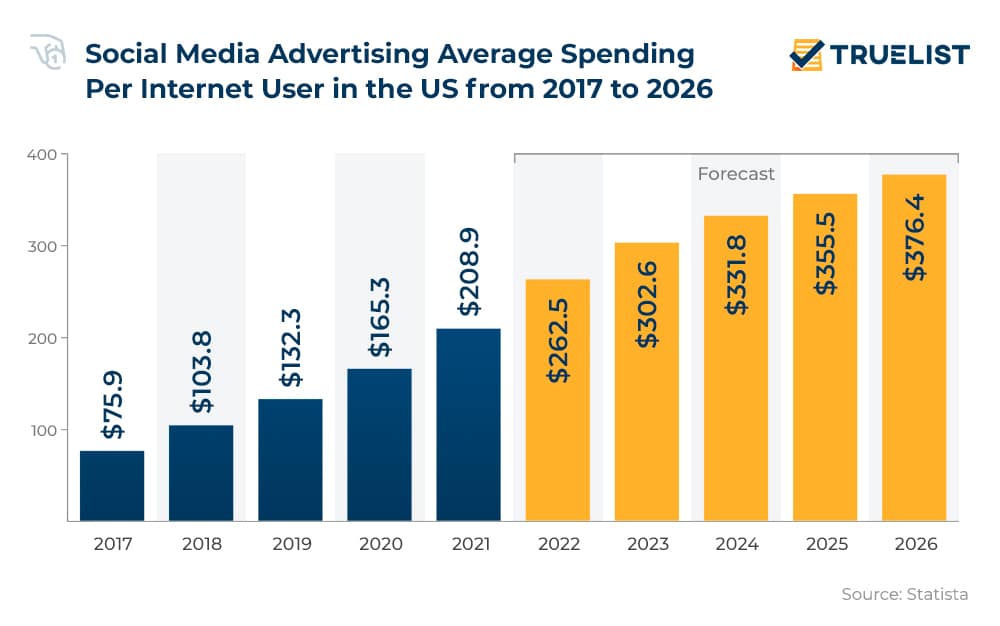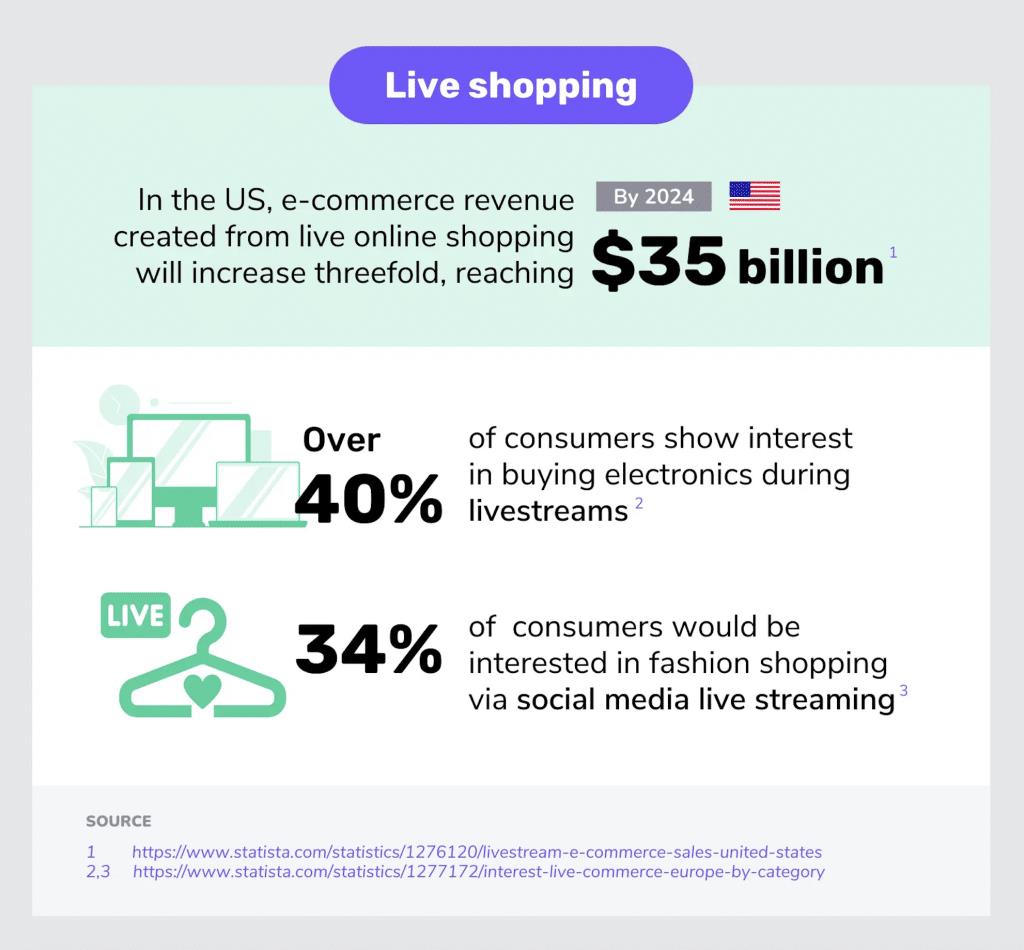Social media is no longer just a place to connect with friends or scroll for entertainment. It’s become a thriving marketplace where product discovery, brand engagement, and purchases happen in the same feed. As platforms double down on in-app shopping and creators gain more influence over consumer decisions, the future of e-commerce on social media is being rewritten in real time.
Whether you’re a brand, a marketer, or a curious entrepreneur, understanding how social commerce trends are evolving is essential to stay competitive.
Quick Takeaways
- Social media platforms are becoming full-fledged shopping destinations. Instagram, TikTok, and Pinterest are turning engagement into conversions with in-app stores, product tagging, and seamless checkouts.
- Influencer-led commerce is dominating buying behavior. Micro and macro influencers drive trust, discovery, and action—often more than brand ads ever could.
- AI and personalization tools are redefining targeting. Smarter algorithms and data analytics help deliver the right product to the right person at the perfect moment.
- Live shopping and short-form video are skyrocketing. Real-time demos and entertaining shoppable content are blurring the lines between entertainment and retail.
- Gen Z is setting the pace for how social commerce evolves. Their expectations for authenticity, speed, and convenience are forcing brands to adapt or fall behind.
Social Media Platforms as Retail Hubs
Instagram’s Shops, TikTok’s Shopping tab, and Pinterest’s Product Pins all point to the same trend—social platforms want users to complete the entire purchase journey without leaving the app. With integrated payment tools and streamlined product catalogs, brands can create native storefronts that live where their audiences already spend time.
Facebook and Instagram have even enabled live chat-based shopping, where customers ask questions directly and buy on the spot. Meanwhile, TikTok has tested affiliate programs and native checkout features in global markets, signaling an even more aggressive push into e-commerce.
What this means for brands is a new kind of customer journey—shorter, faster, and often impulse-driven.

Image source
Influencer-Driven Social Commerce
Shoppers today trust real people more than polished campaigns. Influencer marketing continues to drive major returns, particularly in beauty, fashion, home decor, and lifestyle categories.
But it’s no longer just about likes and shares. With affiliate links, custom storefronts, and commission-based partnerships, creators now serve as salespeople for brands, making influencer marketing measurable and performance-based.
Expect to see a rise in creator-led product lines, deeper integrations between brands and influencers, and more platform features designed to help creators sell seamlessly.
Smarter Targeting with AI and First-Party Data
With the decline of third-party cookies and growing data privacy concerns, platforms are investing heavily in AI and first-party data strategies. Social commerce trends now include more sophisticated audience segmentation and real-time personalization.
Imagine scrolling through Instagram and being shown a product not just because of your demographics, but based on your past behavior, saved posts, and purchase history. That level of precision targeting isn’t futuristic—it’s already here.
Brands that invest in data collection and intelligent segmentation will be able to build stronger connections and drive conversions more efficiently.
Live Shopping and Shoppable Video
Live shopping is booming in markets like China, and it’s gaining traction globally. TikTok, Instagram, and YouTube have all launched features that let brands host live product demos, complete with in-stream purchasing.
This format taps into FOMO, urgency, and entertainment all at once. It combines the credibility of influencers with the immediacy of live interaction. Viewers can comment, ask questions, and make purchases on the spot—no extra tabs, no friction.
Short-form video, from TikTok to Instagram Reels, is also proving to be one of the most powerful tools in a social commerce strategy. These videos entertain while showcasing real products in everyday use, helping potential buyers visualize ownership.

Image source
Gen Z’s Influence on Social Commerce Trends
Digital natives are pushing brands to be faster, more transparent, and values-driven. Gen Z expects more than just a great product—they want connection, purpose, and a seamless shopping experience that matches how they consume content.
This generation isn’t swayed by traditional advertising. Instead, they trust creators, value authentic storytelling, and expect brands to speak their language. Social commerce that thrives with Gen Z tends to be short-form, interactive, mobile-first, and socially conscious.
Brands targeting Gen Z should pay close attention to how younger audiences behave on social platforms and adjust their messaging, content, and commerce models accordingly.
What the Future Holds
Social commerce will become increasingly immersive and integrated into daily digital life. Expect to see:
- Augmented reality (AR) try-ons becoming standard in fashion and beauty.
- Voice shopping through AI-powered assistants on social platforms.
- More B2B brands dipping into social selling via LinkedIn and niche communities.
- AI-generated influencers driving engagement and even sales in experimental campaigns.
The lines between entertainment, communication, and commerce will blur even further—creating endless opportunities for brands that can innovate and adapt quickly.
How to Prepare Your Brand
To thrive in the future of social commerce, businesses should:
- Audit which platforms their target audience uses most actively.
- Develop platform-specific content tailored to each format (Reels, Stories, livestreams).
- Collaborate with micro-influencers in their niche to build trust and generate conversions.
- Invest in AI tools and data analytics to fine-tune targeting.
- Simplify the shopping experience across social channels, from discovery to checkout.
Even small changes—like tagging products in posts or responding to DMs faster—can drastically increase engagement and sales over time.
Video source
Final Thoughts
Social media is evolving from a digital hangout to a fully equipped shopping center. The future of e-commerce on social media belongs to brands that embrace agility, prioritize their audience’s habits, and stay in step with emerging trends.
From algorithm-driven targeting to creator-led commerce, the opportunities are vast—and growing. Those who move now will find themselves ahead of the curve as the social commerce landscape matures. Is your brand ready?
But if you need some help, Marketing Insider Group offers specialized services to create content, manage campaigns, and engage with your audience. Contact us today to learn more or book your free consultation with our team!
Read More
By: Lauren Basiura
Title: The Future of E-commerce on Social Media
Sourced From: marketinginsidergroup.com/social-media/the-future-of-e-commerce-on-social-media/
Published Date: Tue, 24 Jun 2025 10:00:03 +0000
.png)





